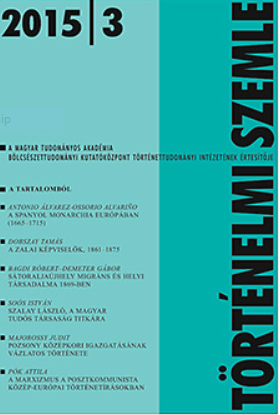Egy határ menti szabad királyi város középkori igazgatásának vázlatos története (Tanulmány egy készülő pozsonyi archontológiai kötet elé)
Sketching the Urban Administration of a Free Royal Town at the Border of the Kingdom of Hungary (Introduction to the “Archontology of Medieval Pressburg” in Process)
Author(s): Judit MajorossySubject(s): Public Administration, Political history, Middle Ages, Rural and urban sociology
Published by: Magyar Tudományos Akadémia Bölcsészettudományi Kutatóközpont Történettudományi Intézet
Keywords: Urban Administration; Free Royal Town; Kingdom of Hungary; archontology;
Summary/Abstract: The present study aims at providing a new (revisited) general overview of the urban administration and its institutions in medieval Pressburg, based on the complete research of all the survived, relating source material. Such a survey, together with the reconsideration of the results of the old (mainly 19th- and early 20th-century) literature, was, on the one hand, an urging necessity for the author during her preparatory work with the archontology of the medieval town leaders and the members of the town administration (whose lists are to be published in the near future). On the other hand, it may also be useful for the general readers to glimpse a panoramic picture about Pressburg for which no such systematically done, modern history of medieval municipalism was available so far. The author, first of all, dealt with the top leaders (the judge, the councillors, and the lord mayor) – including the list of the two main leaders in the appendix that she put together for the period between 1390 and 1545 – and she summarized the urban election, the development of the inner and the outer town councils and their duties. In addition, the different financial and administrative functions as well as the matters of tax collection, market control and other public urban tasks were analysed in the light of the extant sources. Afterwards, she also touched upon the overall place of the leadership within the urban society (on issues such as the concentration of power, the generations of leaders, etc.) and the representation of power, mainly the procession on the election days, focusing on those few elements known already for the medieval period (and not only from narratives of the early modern times). Naturally, such a sketch does not make a full, in-depth analysis of a complex topic possible, but can reveal (and make clearly visible) the medieval phenomena (the characteristics and the specialties of the investigated urban community) and can also facilitate comparative urban history.
Journal: Történelmi Szemle
- Issue Year: 2015
- Issue No: 03
- Page Range: 441-469
- Page Count: 29
- Language: Hungarian

